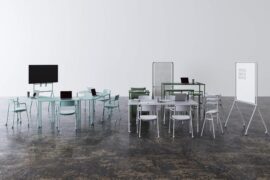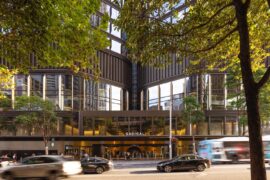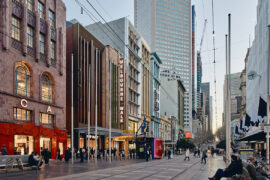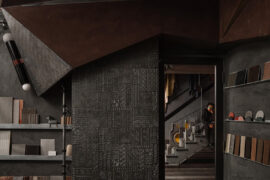The rigorous approach of Red Bean Architects is precipitating an evolutionary architectural practice and aspirations to effect change at the city scale. Felicia Toh writes for Cubes Indesign.

Teo Yee Chin, the Principal of Red Bean Architects at his studio. Photo by Justin Loh
February 20th, 2017
Teo Yee Chin, principal of Red Bean Architects, speaks of his work with detached modesty – not in terms of a practice that has arrived, but as one in the process of becoming, nourished by the rich soil of aspiration. “In ten years’ time, a firm like ours will grow to a size where we can make a difference. Now we are just laying the foundation. I hope we can do something meaningful,” he says of his practice, which was founded in 2009.
Perhaps it is fitting then, that he chose the name Red Bean Architects, which references a seed containing DNA – a “container of what is to come,” as he explains. “Information is contained in the seed – the ideas we have as designers or architects. We take it, plant it, and it gives birth to a shoot or a plant – our ideas take on a form.”
These ideas gain ground for expression and refinement through the multiple engagements in which Teo is involved – as an architect, writer, adjunct professor at the National University of Singapore and the Singapore University of Technology and Design, and Chair of the Singapore Institute of Architects’ Awards Committee.
He credits his penchant for writing with the shaping of his thought processes in the design field. “I was a writer before I discovered how to design. I learnt to organise my thoughts, to argue and to justify. When you write you have to be very honest with yourself,” he notes. The rigour of writing led to a ‘click’ when he realised how to put forth an argument in his architectural process. Now, he constantly tries to weave the thinking, writing and design strands together, but there isn’t always the opportunity to do so.
The recently completed Singapore Pavilion at the Biennale Architettura 2016 in Venice was one instance when there was. As one of the three co-curators of the Singapore Pavilion, Teo helped to formulate the brief for the exhibition, as well as design it. The driving premise of the exhibition was, as he explains, that: “Singapore has heart. It has a creative soul waiting to be uncovered. The city has emerging voices that want a say in how it is planned. We are urban creatures who have been grabbed from villages and thrown into modular apartments in the sky – who are now rediscovering the ground and land through urban farming and community gardening.”
Teo is of the view that everyone is essentially trying to make Singapore more of a home in a deep way, to belong and develop rootedness by reconnecting to our land.
For the full story, including much more on the work of Red Bean Architects, pick up a copy of Cubes Indesign #84 at newsstands.
INDESIGN is on instagram
Follow @indesignlive
A searchable and comprehensive guide for specifying leading products and their suppliers
Keep up to date with the latest and greatest from our industry BFF's!

Welcomed to the Australian design scene in 2024, Kokuyo is set to redefine collaboration, bringing its unique blend of colour and function to individuals and corporations, designed to be used Any Way!

For those who appreciate form as much as function, Gaggenau’s latest induction innovation delivers sculpted precision and effortless flexibility, disappearing seamlessly into the surface when not in use.

Rising above the new Sydney Metro Gadigal Station on Pitt Street, Investa’s Parkline Place is redefining the office property aesthetic.

London-based design duo Raw Edges have joined forces with Established & Sons and Tongue & Groove to introduce Wall to Wall – a hand-stained, “living collection” that transforms parquet flooring into a canvas of colour, pattern, and possibility.
The internet never sleeps! Here's the stuff you might have missed

Buchan weaves heritage and contemporary retail across a 3,600sqm site featuring dual-branded hotels, arcades and revitalised laneways.

Bangalore studio Multitude of Sins elevates true leftovers — not surplus — into a richly layered workspace where waste materials become narrative, structure and sculptural expression.